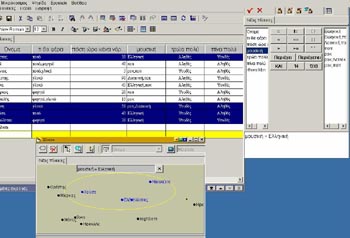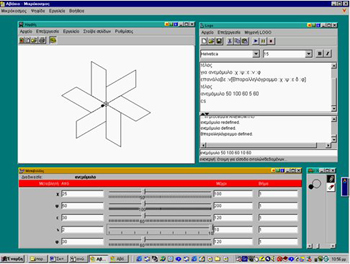 |
THE PARTY
|
Sometime in your life you would surely have arranged a party! Of course! What did actually go well? What did not? What kind of advice would you give to somebody who would really want to organise a party? Which factors should (s)he take beforehand into consideration, what should (s)he ask his/ her guests, what should (s)he prepare?
The learning activity called “The Party” is intersubjective and interesting for a wide range of students, varying in age. This activity is particularly popular in both 5th and 6th grades of Elementary School and constantly implemented in Greek Schools – in a whole classroom level- since 2000. Groups of 2-3 students make the arrangements for their own successful
|
 |
 |
| party: each group discusses and decides on the parameters/ factors that according to students’ judgment seem of critical importance to a party arrangement, collects, by interacting with classmates, all the information relevant to the parameters selected, sorting it in “Dataworld” software, trying in parallel to formulate questions using as a springboard the data provided and thinking about the actual meaning of the answers produced.
In the concluding phase, each group produces a written report about the deductions conducted regarding the actual arrangement of the party. In a whole class discussion the participant student-groups negotiate not only their conclusions but also the actual logical steps under which they managed to reach each and every one of their conclusions. Under the already described context they practice on issues/skills like information processing and use of digital technology tools. Trying to cater for these issues, “Dataworld” software actually combines table processing, basic elements of statistical analysis, Boolean algebra, Venn diagrams- and set operations. |
download
   |
-------------------------------------------------------------------------------------------------
|
SKETCHING WITH PARALLELOGRAMS
|
The ‘turtle’ – grapher needs your help so as to sketch a parallelogram. Write a program so that the turtle would construct any parallelogram. Use the sliders so as to ‘breathe life’ into the parallelogram by changing it dynamically. Then you can create something absolutely new, unconventional and amazing only with parallelograms. Breathe also life into it through the sliders!!
This activity is of the most favourites in our schools. It is being applied in the 6th grade of primary school for several years! The aim is triple: firstly students take on the role of the scientist-mathematician, exploring and drawing conclusions as far as the properties and relations of geome-
|
 |
 |
| trical schemes are concerned; secondly they can understand the properties of prallelograms in depth but also what a property of a geometrical scheme means and finally they can use these properties in order to practice their creativity, their imagination and heuristics abilities so as to ‘breathe life’ into compositions of parallelograms. Specially designed programs -with which they can experiment and explore rules and properties- as well as a computational environment, the ‘turtleworld’, that enables them to express their mathematical ideas in a symbolic and graphic way and to kinaesthetically manipulate the parametric values of their programs, are at students’ disposal. In particular the ‘animation effect’ achieved with the sliders provides them with the experience of exploiting mathematics for amazing animations. |
download



|
|
 |